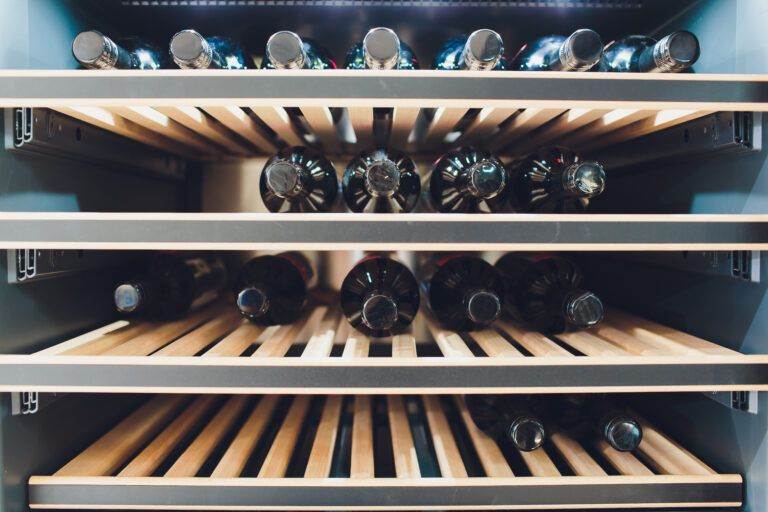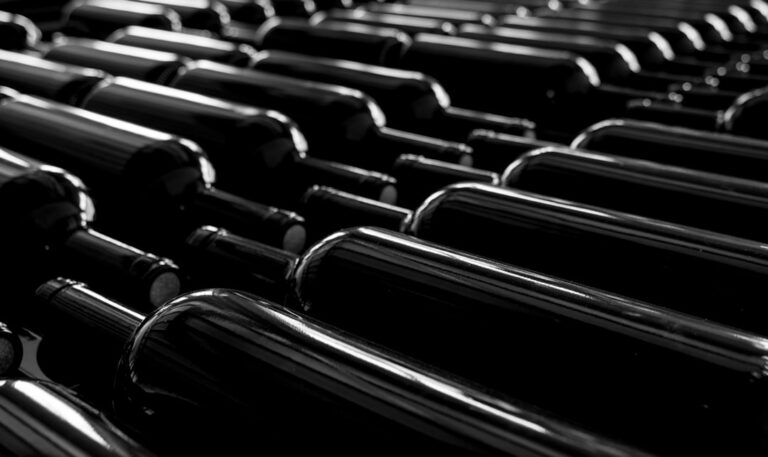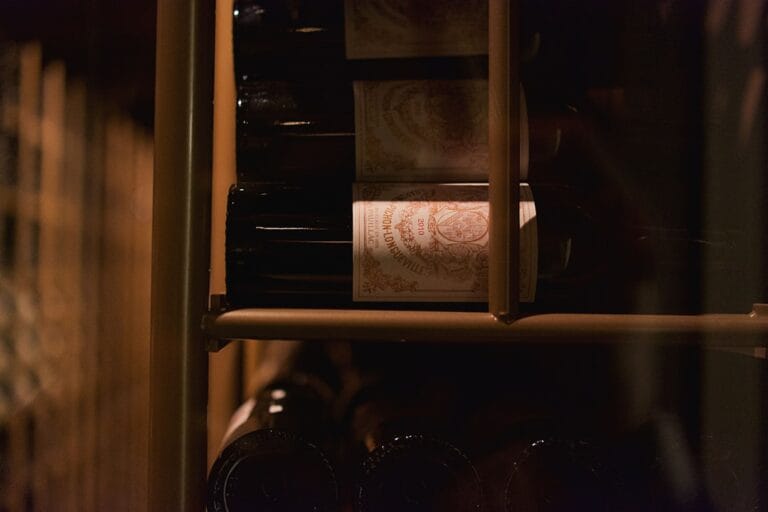Wine Serving Temperature: Why It Matters and How to Get It Right
Serving wine at the right temperature is crucial to fully appreciate its flavors and aromas. Temperature can greatly affect the taste and overall experience of drinking wine. Whether it’s a red, white, or sparkling wine, each type has an ideal serving temperature that brings out its best qualities. By understanding the impact of temperature on wine, you can enhance your enjoyment and appreciation of this beloved beverage.
Temperature plays a significant role in how we perceive taste and aroma. When wine is served at the correct temperature, it allows the flavors to be balanced and harmonious. Serving wine too cold can mask its aromas and flavors, while serving it too warm can make it taste flat and uninteresting. By serving wine at the optimal temperature, you can fully experience the nuances and complexities that each bottle has to offer.
How Temperature Affects the Taste of Wine
The science behind how temperature impacts wine lies in its chemical composition. When wine is chilled, the molecules in the liquid slow down, resulting in a decrease in volatility. This means that the aromas are less likely to be released, leading to a muted olfactory experience. On the other hand, when wine is served too warm, the molecules become more volatile, leading to an overpowering aroma that can mask the subtle nuances of the wine.
Different types of wines have different flavor profiles that can be brought out by serving them at specific temperatures. For example, white wines are generally served chilled because lower temperatures enhance their acidity and freshness. Chilling a white wine also helps to balance any residual sweetness and makes it more refreshing to drink.
Red wines, on the other hand, are typically served at slightly cooler than room temperature. This allows the tannins in red wines to soften and become more integrated with the other flavors. Serving red wine too warm can result in a harsh and astringent taste.
Sparkling wines, such as Champagne and Prosecco, are best served chilled to preserve their effervescence and crispness. The bubbles in sparkling wine are more pronounced when the wine is served at a lower temperature, making it more enjoyable to drink.
Understanding the Ideal Serving Temperature for Different Wine Types
To fully appreciate the flavors and aromas of different types of wine, it is important to serve them at their ideal temperatures. Here is a breakdown of the ideal serving temperatures for different types of wine:
– White wines: Most white wines are best served between 45°F (7°C) and 55°F (13°C). Light-bodied white wines, such as Sauvignon Blanc and Pinot Grigio, are best served at the lower end of this range, while fuller-bodied white wines, such as Chardonnay, can be served at the higher end.
– Red wines: Red wines are generally best served between 55°F (13°C) and 65°F (18°C). Lighter red wines, such as Pinot Noir, can be served at the lower end of this range, while fuller-bodied red wines, such as Cabernet Sauvignon and Syrah, can be served at the higher end.
– Sparkling wines: Sparkling wines are best served between 40°F (4°C) and 50°F (10°C). This lower temperature helps to preserve the bubbles and keep the wine refreshing.
It is important to note that these are general guidelines and individual preferences may vary. Some people may prefer their white wines slightly colder or their red wines slightly warmer. It is always a good idea to experiment with different serving temperatures to find what works best for your palate.
Several factors can influence the ideal serving temperature for a specific wine. The acidity and tannins in a wine can play a role in determining its optimal temperature. Wines with higher acidity, such as Sauvignon Blanc, can benefit from being served at a slightly cooler temperature to balance the acidity. Wines with higher tannins, such as Cabernet Sauvignon, can benefit from being served at a slightly warmer temperature to soften the tannins.
The Impact of Room Temperature and Storage on Wine
Room temperature and storage conditions can greatly affect the temperature of wine. Many people assume that room temperature refers to the average temperature of a room, which is typically around 70°F (21°C). However, this is actually too warm for most wines, especially red wines.
Ideally, red wines should be stored and served slightly cooler than room temperature. This is because the average room temperature can cause red wines to become too warm, resulting in a loss of flavor and balance. White wines, on the other hand, should be stored and served slightly warmer than refrigerator temperature to allow their flavors to fully develop.
Proper storage conditions are also important for maintaining the optimal serving temperature of wine. Wine should be stored in a cool, dark place with a consistent temperature. Fluctuations in temperature can cause the wine to expand and contract, potentially damaging the cork and allowing air to enter the bottle. This can lead to oxidation and spoilage of the wine.
Tips for Cooling Wine Quickly and Efficiently
There may be times when you need to cool a bottle of wine quickly, such as when unexpected guests arrive or when you forget to chill a bottle in advance. Here are some practical tips for cooling wine quickly:
– Ice bucket: Fill a bucket with ice and water and place the bottle of wine inside. The combination of ice and water will cool the wine faster than ice alone.
– Freezer: If you’re short on time, you can place the bottle of wine in the freezer for about 15-20 minutes. Be careful not to forget about it, as leaving it in the freezer for too long can cause the wine to freeze and expand, potentially breaking the bottle.
– Wet towel: Wrap a wet towel around the bottle and place it in the refrigerator. The moisture from the towel will help to cool the wine faster.
It is important to note that while these methods can cool wine quickly, they may not bring it to the ideal serving temperature. It is always best to plan ahead and chill your wine in advance whenever possible.
How to Warm Up Wine Safely and Effectively
If you find that your wine is too cold, there are safe and effective ways to warm it up:
– Warm water: Fill a bowl or sink with warm water and place the bottle of wine in it. Swirl the bottle gently to evenly distribute the warmth. Be careful not to use hot water, as this can heat the wine too quickly and potentially damage its flavors.
– Decanter: Pour the wine into a decanter and let it sit at room temperature for a few minutes. The larger surface area of the decanter will allow the wine to warm up more quickly.
It is important to warm up wine slowly and gently to avoid overheating it. Overheating can cause the flavors to become muted and unbalanced, detracting from the overall enjoyment of the wine.
The Role of Glassware in Wine Temperature
The shape and material of wine glasses can also impact the temperature of wine. Thin, delicate glasses can transfer heat from your hand to the wine, potentially warming it up too quickly. On the other hand, thick glasses can insulate the wine, preventing it from reaching its optimal serving temperature.
Ideally, wine glasses should be made of thin, clear glass that allows you to see the color and clarity of the wine. The shape of the glass can also affect how the aromas are released. For example, a tulip-shaped glass with a narrow opening can concentrate the aromas, while a wider bowl can allow the aromas to disperse more freely.
Different types of wine have different ideal glassware. For example, white wines are typically served in smaller, narrower glasses to concentrate the aromas and preserve the temperature. Red wines are often served in larger, wider glasses to allow the wine to breathe and develop its flavors.
Serving Wine Outdoors: Challenges and Solutions
Serving wine outdoors can present unique challenges, such as fluctuating temperatures and lack of refrigeration. However, with some planning and preparation, you can still enjoy your favorite wines al fresco. Here are some solutions for serving wine outdoors:
– Insulated wine bags: Invest in an insulated wine bag or cooler that can keep your wine at the desired temperature for an extended period of time. These bags are designed to maintain the temperature of the wine and protect it from external heat.
– Portable wine coolers: If you frequently enjoy picnics or outdoor gatherings, consider investing in a portable wine cooler. These coolers are specifically designed to keep wine at the ideal serving temperature and can be easily transported.
– Ice buckets: If you don’t have access to refrigeration, you can use an ice bucket to keep your wine chilled. Fill a bucket with ice and water and place the bottle of wine inside. This will help to maintain a cool temperature for your wine.
Common Mistakes to Avoid When Serving Wine
When it comes to serving wine at the right temperature, there are some common mistakes that people make. Here are some tips for avoiding these mistakes:
– Serving it too cold: Avoid serving white wines straight from the refrigerator, as this can mask their flavors and aromas. Take them out of the refrigerator about 15 minutes before serving to allow them to warm up slightly.
– Serving it too warm: Avoid serving red wines at room temperature, especially during warmer months. Chill them in the refrigerator for about 15 minutes before serving to bring out their best qualities.
– Not adjusting for storage conditions: If you store your wine in a cool cellar or wine fridge, it may be slightly cooler than the ideal serving temperature. Take this into account and let the wine warm up slightly before serving.
– Not experimenting with different temperatures: Don’t be afraid to experiment with different serving temperatures to find what works best for your palate. Everyone’s taste preferences are different, so don’t be afraid to deviate from the recommended guidelines.
Mastering Wine Serving Temperature for a Better Tasting Experience
Serving wine at the right temperature is essential for fully appreciating its flavors and aromas. By understanding how temperature affects wine and experimenting with different serving temperatures, you can enhance your wine tasting experience. Whether it’s a white, red, or sparkling wine, each type has an ideal serving temperature that brings out its best qualities.
From understanding the science behind temperature to knowing the ideal serving temperatures for different types of wine, there are many factors to consider when it comes to serving wine at the right temperature. By avoiding common mistakes and utilizing practical tips for cooling and warming up wine, you can ensure that each bottle is enjoyed to its fullest potential.
So the next time you open a bottle of wine, take a moment to consider its ideal serving temperature. By paying attention to this often overlooked detail, you can elevate your wine tasting experience and truly savor every sip. Cheers!







